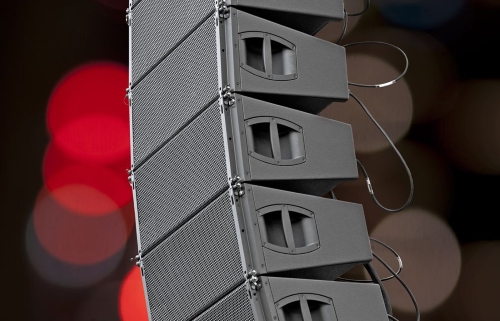I recently worked to assist a national touring artist’s system tech as he toured through one of the venues I mix. The band opted to use all their own production (fine by me!) so my job basically consisted of lending a hand throughout the day as needed.
The room has a concrete floor and walls, and a sheet metal ceiling. The ceiling height is about 12 feet and the room measures 46 feet by about 120 feet. Halfway back, there’s a concrete ceiling beam that cuts the height down to about 10 feet. In other words…
The space is an acoustic nightmare.
Subs were originally deployed as a standard L/R configuration. However, as we walked the room during sine wave tests, there was extreme variation in level due to comb filters, exacerbated by the strong reflections off the walls. (A 2-element deployment turns into a multi-element deployment, as the concrete walls act as acoustic “mirrors” at low frequencies.)
After allowing the tech ample time to attempt to solve the problem on his own, I politely suggested laying out all of the subs in a single line in front of the stage.
This deployment is generally avoided in wider venues, because the line array creates a response that narrows coverage off to the sides of the array, resulting in a narrow, almost rectangular dispersion that throws most of its energy straight forward and backward. Sometimes the boxes are driven with various amounts of delay to steer the coverage in a wider pattern, to offset this.
In this case, however, this narrowing of coverage is exactly what we needed, as the lack of coherent sideways energy meant that reflections off the side walls were greatly reduced. As a result, LF coverage became more consistent throughout the space. Score one for array theory.
Mains were mid-size line array cabinets, stacked three per side on 6-foot tall scaffolding. In this configuration, the top box just barely had a clean throw to the back of the room without bouncing off the ceiling beam. Because the scaffolds were located at the extreme edges of the stage – right up against the walls – two issues were created.
The gap between the two sides of the PA dictated the use of front fills. Not a problem, really, as the tour was carrying some. The other issue is that the boxes were so wide (120-degree dispersion) that almost half of the energy from each box would immediately hit the concrete wall and bounce back into the room.
This was obviously inadvisable, particularly in a room with excessive reverberation and intelligibility issues.
I asked the tech if he would like us to angle the boxes inwards to reduce the dead area in the front rows, and to reduce the amount of energy hitting the side walls. He said that line arrays should always be parallel and can never be angled. “It’s just not… it’s not the theory,” were his exact words to me.
Here’s the deal. We don’t live in a mathematically, theoretically perfect world.
As soon as a physical line array is constructed, array theory is only effective up to a point. A theoretically perfect line array is infinitely long in the vertical dimension, perfectly straight, and consists of small point sources placed very close together. Obviously a real physical line array (especially one that’s only 3 boxes long) doesn’t even come close to approaching this.
At the end of the day, angling the boxes inward would have greatly increased intelligibility and made everyone’s job easier.I found it somewhat inconsistent that the tech seemed to be so bound by the theory of arrays that he couldn’t follow the cardinal rule of thumb: Point the loudspeakers toward the audience.
At the same time, he should have known that three boxes most definitely does not constitute a line source. An array only three feet tall behaves virtually identical to the way a point source would behave.
What’s the point?
I’m not writing this to point fingers or poke fun at a colleague. It’s to demonstrate that theories are the foundational underpinnings of what we do, but they’re not biblical commandments.
We should not blindly follow them; rather, I think it makes a lot more sense to understand the mechanics that make the theory work, and thus be able to use discretion when it comes to appropriate times to “violate” the theory. This scenario had an example from each camp: Array theory solved our subwoofer issue but its misapplication wreaked havoc on the rest of the system.
Note that this is not the same thing as “just doing whatever you want.” Any departures from the predictions of established theories and practices should come from a position of informed intent, not ignorance.
Just because a theory does not always apply, we are not exempt from learning how it works. We won’t know how to effectively break the rules until we understand why they are what they are.















